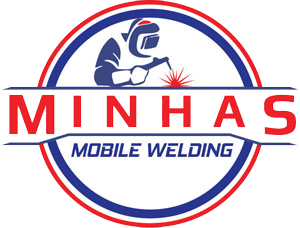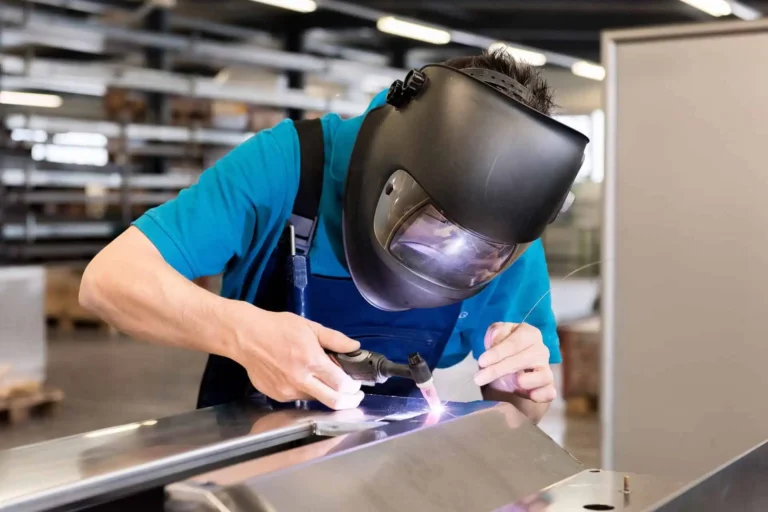Welding is no less than a heartbeat to many industry sectors, like construction, multi-scale manufacturing, even electricals and electronics and so on. Its versatility and usage require the process to be as perfect as possible. To ensure proper adhesion and lasting strength, flux-core weld fits as a powerful, versatile, and ideal for thicker metals.
Types of welding include Shielded Metal Arc Welding, Gas Metal Arc Welding, Gas Tungsten Arc Welding, Flux-Cored Arc Welding, Resistance Welding, Submerged Arc Welding, and so on. Flux-Core Weld stands out amongst these. Let us dive into this:
-
Understand the Importance of Flux-Core Welding
Flux-core welding is not merely a technique, it’s a synergy of chemistry and control. It employs a hollow wire lined with flux, which acts as both shield and enhancer. This internal flux acts like a protective layer for the molten pool from atmospheric contamination while deepening penetration into the metal. What sets flux core welding apart is its notable resilience; flux core welding thrives where other methods falter, amidst gusts, grit, and the raw unpredictability of open-air workspaces.
Unlike traditional MIG welding, it demands no external gas shield, making it a favorite among welders who refuse to pause for the weather. Yet, balance is the quiet backbone of mastery here.
-
Preparation: The Foundation of Strength
There’s a saying we live by at Minhas Welding “The weld begins long before the spark.” Every welding technique starts with meticulous preparation. The base metal must be immaculate, freed of oil, rust, mill scale, and paint. Impurities are the saboteurs of structural integrity; they trap gas and birth porous, brittle joints.
For thicker metals, beveling the edges before the weld ensures a deeper, stronger connection. The secret? Patience. Proper cleaning and edge work may feel tedious, but they are the quiet rituals that decide whether your weld stands proud, or fails under pressure.
-
Selecting the Right Flux-Cored Wire for flux-cored wire electrode
Your wire is not just a consumable; it’s the heart of the operation. Choosing it without care is like choosing a foundation without checking the soil. Flux-core wires come in two main types:
- Self-Shielded (FCAW-S): The warrior of the outdoors, built for resilience where shielding gas would falter in the wind. Ideal for rugged, on-site projects and heavy fabrication.
- Gas-Shielded (FCAW-G): The artisan’s choice, offering cleaner welds, less spatter, and smoother aesthetics. Best used in sheltered workshops and structural builds.
Each wire type has its calling. Mild steel, stainless, and galvanized metals all demand specific compositions. A cheaper wire might save you cents now, but cost you stability later. Always pair your wire to your metal, not the other way around.
Here is the method that sheds light on how the flux-core method works. With steady hands and understanding of the technique, a welder can surely take care of it perfectly well.
-
Refining the Technique – Where Science Meets Craft
Flux core welds reward patience and punish haste. The art lies in the angles and the rhythm. Maintain a steady angle, typically between 10° and 15°, depending on whether you push or drag the bead. Travel too fast, and your weld thins out, becomes brittle, and hollow. Move too slow, and it piles up, uneven and spattered.
Keep the arc length consistent, especially with Flux-cored arc welding; this invisible thread decides your weld’s purity. A long arc invites porosity, while a short one chokes the puddle. Skilled welders don’t just see the puddle, they listen to it. The hum, the hiss, the glow, all tell stories of temperature and fusion. At Minhas Welding, our craftsmen read those signs like seasoned storytellers reading between the lines.
-
The Role of the Environment
Even though flux-core welding was born to brave the elements, nature still has a say in your results. Harsh wind, moisture, and biting cold can warp even the best work. Create wind barriers when possible, and always store your wires in a dry, temperature-stable space. Moisture in your wire means contamination in your weld.
A grounded, clutter-free workspace is another quiet ally. It guarantees consistent arcs and wards off erratic weld lines. Welding is as much about atmosphere as it is about technique, the right environment amplifies your control.
-
Inspection and Integrity Testing
The weld’s true worth reveals itself under scrutiny. Once your bead cools, examine it with an unflinching eye. Cracks, undercuts, or incomplete fusion are warnings, not mere blemishes. For critical structures, conduct bend or impact tests to ensure endurance.
At Minhas Welding, every joint undergoes rigorous inspection. We believe strength isn’t what you see, it’s what you prove. Our welds don’t just need to look solid; they must endure storms, time, and tension. That’s the creed that separates craftsmanship from convenience.
-
Skill Over Shortcuts
Durability isn’t an accident, it’s the child of discipline. In welding, there’s no “autopilot.” Robotic Machines can’t replace instinct. Every adjustment, every pass, is a conversation between human intuition and molten metal.
At Minhas Welding, we don’t chase speed; we chase perfection. From structural frameworks to intricate fabrications, we invest in precision and pride. The truth is simple: shortcuts may build fast, but mastery builds forever.
FAQs
What materials require Flux-core welding?
Thick metals are more suitable for Flux-core welding.
What results should be expected from Flux-core welding?
Flux core welding provides one of the most strong solutions.
What if my equipment that needs welding cannot be moved?
We give welding service throughout the mobile service center, and will take care of your project on your doorstep.
How to know more about your welding services?
Call us at (905) 699-7699 and get a first free consultation, discuss your needs, and get the best solutions.



